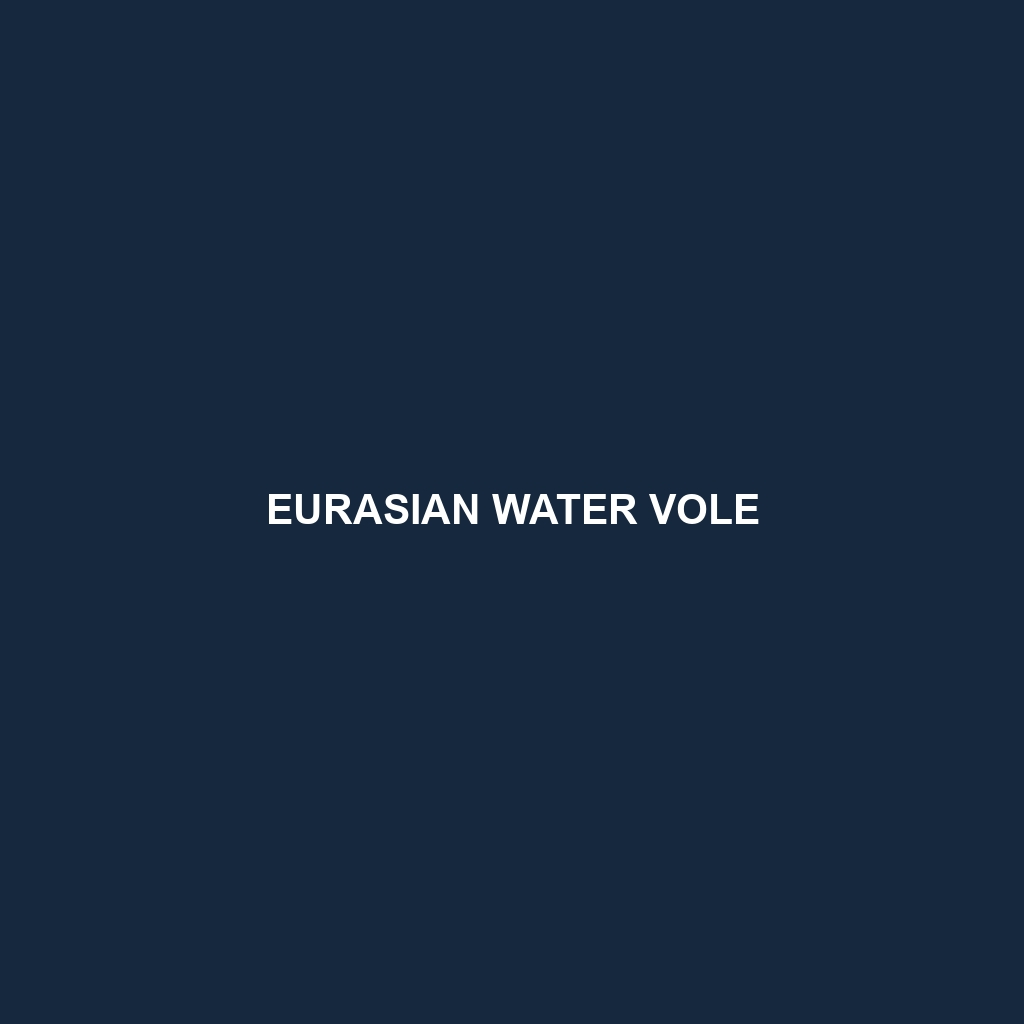Eurasian Water Vole
Common Name: Eurasian Water Vole
Scientific Name: Arvicola amphibius
Habitat: The Eurasian Water Vole is primarily found in wetland habitats across Europe and parts of Asia. These voles thrive in areas such as riverbanks, marshes, and lakesides, where dense vegetation provides shelter. Their distribution extends from Ireland and the British Isles to Scandinavian regions, making them adaptable to diverse aquatic environments.
Physical Characteristics: The Eurasian Water Vole typically reaches a size of 20 to 25 cm in length, excluding its tail, which is about 10 to 15 cm long. These voles are characterized by their robust bodies, rounded heads, and short snouts. Their fur is generally dark brown to reddish-brown, with a lighter underbelly. Their webbed feet are a distinguishing feature that aids in swimming, making them well-suited for an aquatic lifestyle.
Behavior: Eurasian Water Voles are primarily diurnal, meaning they are active during the day. They are known for their strong territorial instincts and often create complex burrow systems near water sources. Socially, they can be both solitary and communal, depending on the season. The voles are excellent swimmers, using their aquatic abilities to evade predators and forage for food.
Diet: The diet of the Eurasian Water Vole consists mainly of aquatic vegetation, including reeds, sedges, and grasses. They are also known to consume the roots and stems of various plants. In the summer months, their diet can expand to include fruits and seeds, underscoring their role as herbivores in wetland ecosystems.
Reproduction: Eurasian Water Voles have a notable breeding season, which typically occurs from March to September. Females give birth to litters of 3 to 8 offspring after a gestation period of about three weeks. These young voles are weaned after a month and reach sexual maturity within two to three months, demonstrating a rapid population growth potential under favorable conditions.
Conservation Status: The conservation status of the Eurasian Water Vole is currently classified as ‘Least Concern’ by the IUCN, though localized populations may be threatened due to habitat destruction and pollution. Conservation efforts are essential to ensure that these mammals maintain viable populations within their natural habitats.
Interesting Facts: An interesting fact about the Eurasian Water Vole is that they are often referred to as “water rats,” although they are not related to true rats. These voles also play a significant role in folklore and literature, with the character Ratty from Kenneth Grahame’s “The Wind in the Willows” being inspired by this charming species.
Role in Ecosystem: The Eurasian Water Vole plays a vital role in its ecosystem by serving as a prey species for various predators, including birds of prey and mammals. Additionally, their grazing habits help to maintain plant diversity in wetland areas, showcasing their importance in supporting biodiversity and ecosystem stability.
